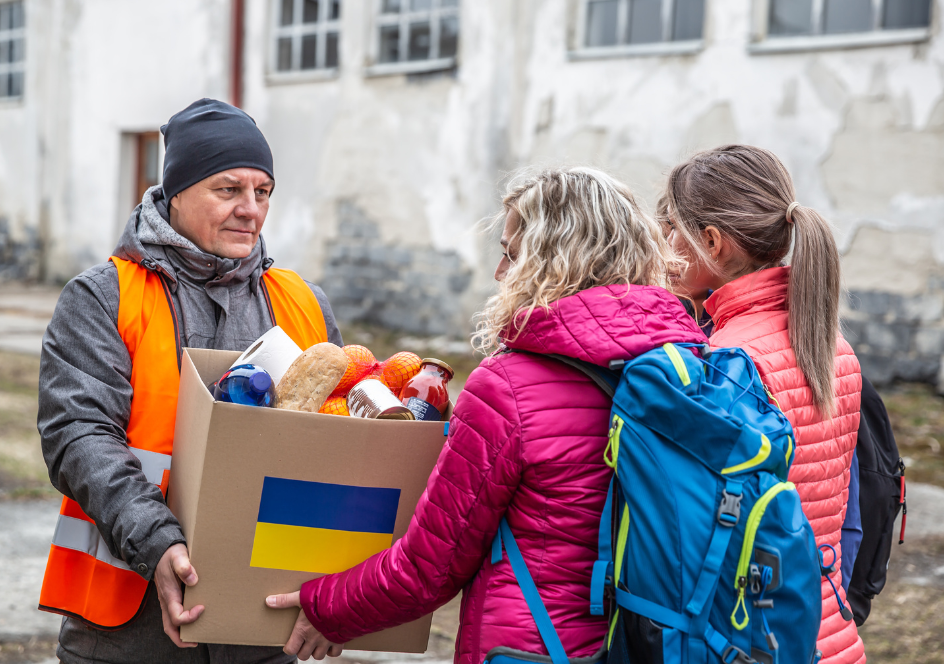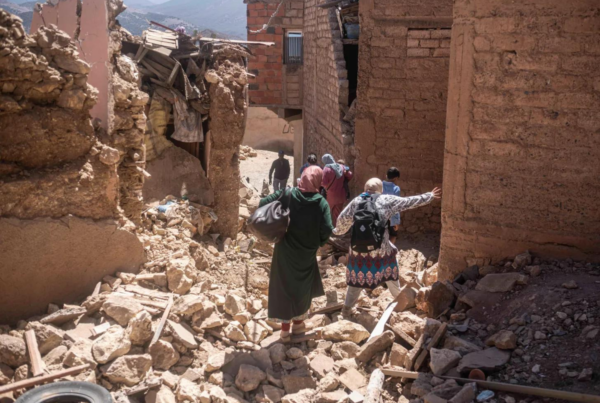
As the brutal winter freeze continues on Ukraine’s shifting battlegrounds, the impact of war steadily ripples outward: more than 12 million Ukrainians are displaced, with some three million more likely unable to stay where they have sheltered. In every corner of Ukraine, civil society has responded: 1,700 new volunteer-based civil society organizations (CSO) have risen up alongside some 150 local NGOs and various church associations. Yet according to the UN Financial Tracking Service, two-thirds of the millions of dollars of humanitarian aid goes to UN agencies, and only 0.003% to national Ukrainian NGOs – those with the “access, local knowledge, connections, language and… the personal commitment to saving lives and delivering help no matter what,” according to a published open letter from a consortium of Ukrainian CSOs and their allies.
To bring Ukrainian voices into more critical conversations, a recent international panel discussion, “Shifting Power and Resources to Ukraine,” was co-hosted by the letter’s author, the National Network of Local Philanthropy Development (NNLPD) from Kiev, Ukraine, and the Global Foundation for Community Foundations (GFCF) based in Johannesburg, South Africa. The panel brought together foundation leaders from Western and Eastern Ukraine to share insights and answer funder questions, and to address the letter’s four key points for funders trying to support humanitarian efforts in Ukraine.
Providing philanthropic funds effectively across national borders is complex and challenging, especially in response to a crisis or disaster. There are many considerations for funders to keep in mind, some of which I outlined when the war in Ukraine first began. As the war approaches its one-year mark, we continue to learn about how philanthropy directed towards Ukraine can be done more effectively. These lessons, which can be applied to international giving around the world in many different circumstances, are important reminders for all of us.
- Cut the bureaucracy. The volume of paperwork required of organizations on the ground is daunting if not impossible. Offices are in war-zone buildings, workers are usually volunteers, program details and deadlines can be unwieldy, and needs the funds might target shift constantly. For example, one community leader spoke of the elderly and pet owners living in high rises that lose elevator access when electricity is cut. All focus shifts to reaching those people and local resettlement – no small task. Funders and NGOs even the next city over, she said, have no way to know how to track, reach, and rescue those whom neighbors can easily identify and mobilize – again, as volunteers – to assist. Trust and unrestricted funding are key.
- Let local civil society actors decide their priorities and how they wish to act in solidarity. In response to the issue of funder restrictions on supporting military action, the coordinator from NNLPD cited the fact that food, warm clothing, bedding, and medical assistance has no “neutral” designation once inside the country. Soldiers are family defending their homes, and aid to families is shared, naturally, with their loved ones. External decisions about where humanitarian aid must – and must not – go can make “inter-group divisions wore and reduce self-reliance and harm local markets.” Supporting those on the front lines protects civilians and reduces aid needed and casualties overall, and the NNLPD suggests that “resistance humanitarianism,” as demonstrated against the Nazis in Europe in the last century and more recently, in Myanmar and Syria, should be the goal.
- Invest in ways to help local people tell their own stories and to help them explain what they are doing to help. This supports deeper understanding and helps them secure access to resources directly. Ukrainian CSOs have come to feel that international NGOs and agencies have come to gather learning from them and then “translate” for the broader public in ways that control narratives in the larger organizations’ favor. Portraying Ukrainians as powerless is inaccurate and, as was made clear, deeply insulting. Thus, they point out, why can’t local people use available technologies to share their experiences and build solidarity and accountability directly between funders and influencers and Ukrainian citizenry? What is needed to make that happen, simply, is more attention to those systems that enable more direct conversations, and support by all players for amplifying Ukrainian voices.
- Start to learn from them. In light of the amount of funding targeted for “capacity building,” the CSOs asked a powerful question: “Do you know enough about how to work with the localization of international resources?” The answer, clearly by many donors, is no. As the letter so neatly sums up, only those rooted in communities affected by crisis “have the historical, cultural, linguistic, and contextual knowledge and understanding of local realities sufficient to respond effectively.” In short, there is no solution without the existing networks and partnerships that existed within communities even before, in Ukraine’s case, the advent of war. In order to know whom to fund to truly make a difference, international donors need to seek and build internal capacity for genuine understanding of context and opportunity, to work in greater concert with the knowledge and strength of CSOs.
At the end, the letter notes that “the gap between narrative and action is wide.” To move to action, the authors suggest “relaxing some of the rigid systems, sharing risks equitably, advocating for alternative kinds of accountability metrics, or experimenting with new approaches and new (local) partners.” Doing so in Ukraine, with a civil society-first approach, then sets the stage for doing so around the world.
While the conversation was lively and headed in many directions, the common threads lay in the open letter itself. These Ukrainian CSOs, as evidenced by meetings and public statements, including the Salzberg Statement Supporting Ukrainian Civil Society, are committed to leadership not only during this crisis, but into the future on behalf of the health, resilience, and power of civil societies around the world. I highly encourage donors to learn more about ways to educate themselves on this important work and how to support Ukrainian CSOs more effectively.
TPI’s Center for Global Philanthropy supports donors in the US and around the global to effectively give across borders both in times of crises and for long-term sustainable development. Please reach out to Maggi Alexander to learn more about how TPI might support your own philanthropic efforts.



Join the discussion One Comment